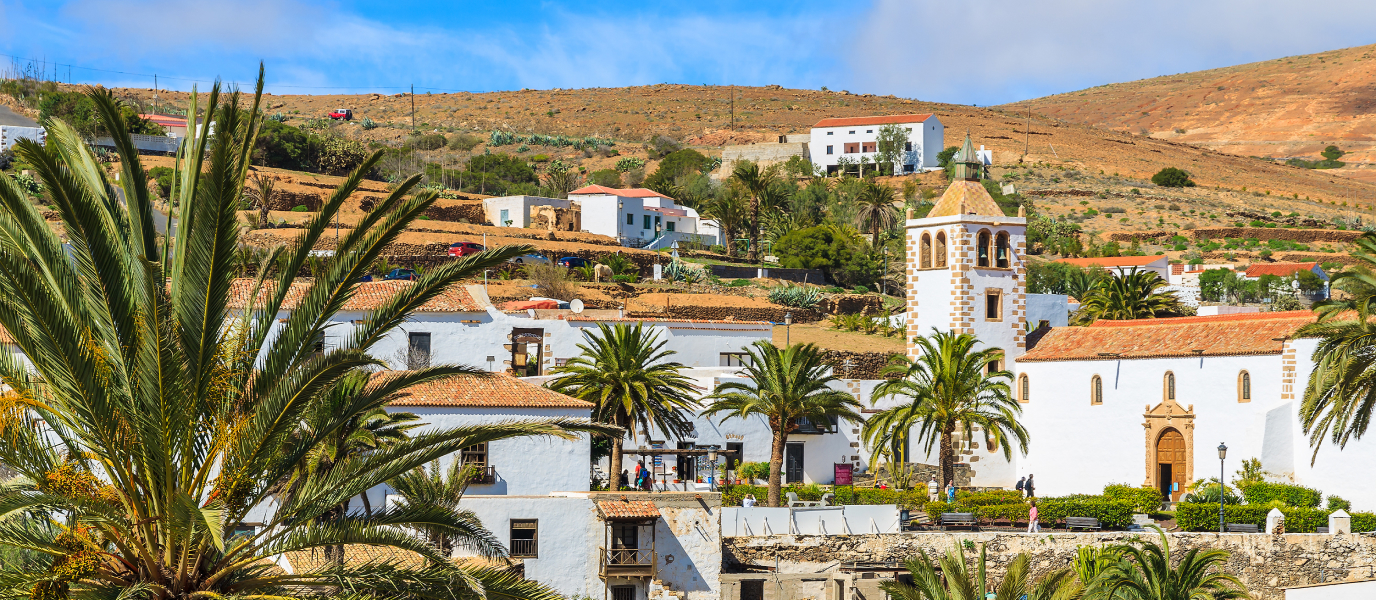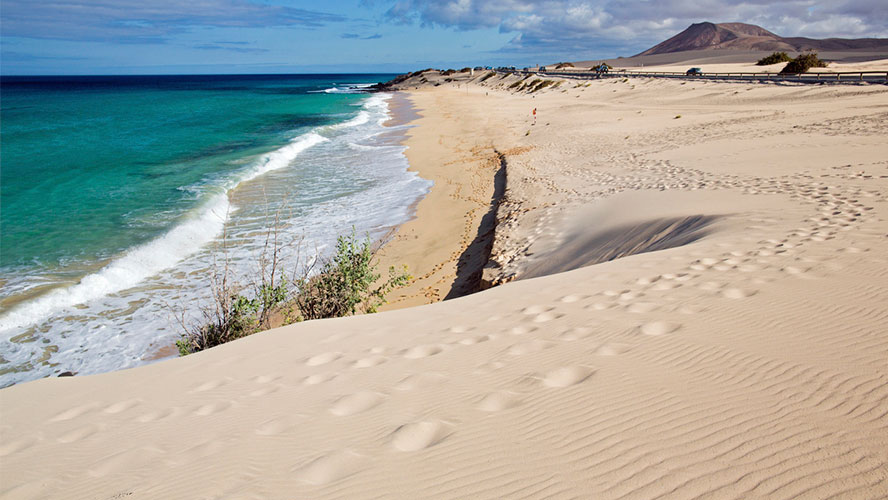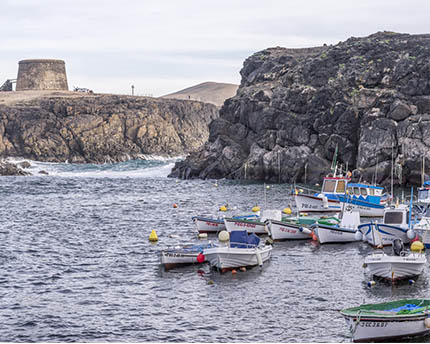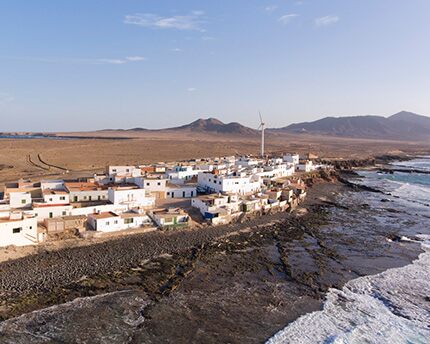Fuerteventura is an island full of surprises that always manages to astonish with places steeped in history. One such place is Betancuria, the least-populated town on this Canary Island. The town’s population of around 800 inhabitants holds onto the memory of its foundation, by Jean Béthencourt, in the fifteenth century.
Its location in the valley of Macizo de Betancuria is, in part, responsible for its success as a tourist destination. In fact, it is considered the most important town, in an artistic sense, in Fuerteventura. Despite not having long beaches or important monuments, each year it attracts thousands of tourists who surrender to its charm.
What to see in Betancuria
The main tourist attractions in Betancuria are linked to its unique nature, enjoying the authentic local cuisine and, above all, local peoples’ hospitality towards visitors. Some of the islands must-visit places include Betancuria Rural Park, Guise viewpoint, the Archaeological Museum and the church of Santa María. Read on for everything you need to know to make the most of an extraordinary holiday.
-
Betancuria Rural Park
The brownish colours of the terrain of Betancuria Rural Park are, without a doubt, its main feature and the natural space is of great scientific interest. Its crags and massifs are home to countless protected plant species, such as nicotiana glauca, which is sometimes mixed with lower quality tobacco. A great variety of fauna can also be seen around the damns of Las Peñitas and Los Molinos, as well as around the cliffs, which serve as a refuge for the area’s birds of prey.
-
The Betancuria massif
The Betancuria massif has been the setting of important scientific findings, such as those concerning oceanic sediment and marine animal fossils. Be sure not to miss the Natural Monument of Ajuy, which is home to the oldest rocks in the whole archipelago.
The flora that lives in the crags and massifs also deserves some of your time, as it includes species endemic to Fuerteventura, such as the balsam spurge, apteranthes buchardii and the Canary Island daisy. Palm trees and tamarix canariensis, trees that have been documented since the fifteenth century, also form part of the landscape.
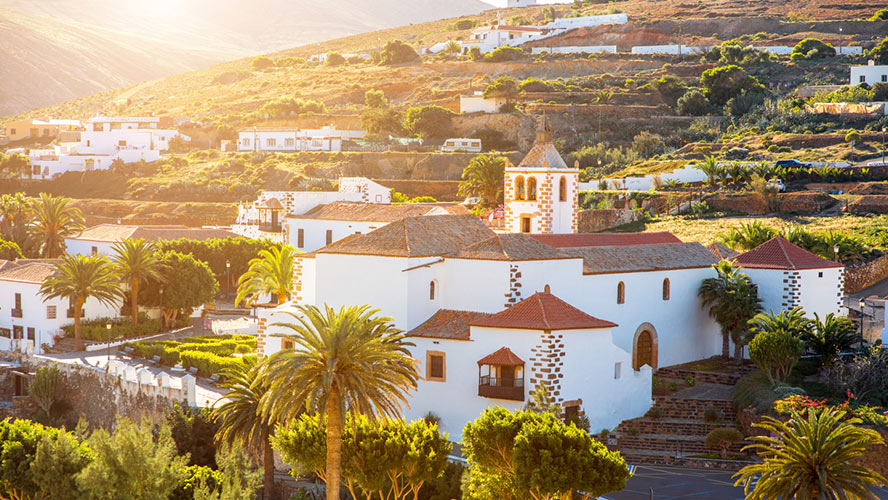
-
Guise viewpoint
Two large statues of the ancient kings of Fuerteventura preside over the landscape of the Guise viewpoint. The statues were not placed there at random, but rather recall how the island of Fuerteventura was divided into two kingdoms led by two monarchs in the fifteenth century. In this case, the sculptures represent Guise and Ayose. If you stand level with them, you’ll be able to enjoy immense panoramic views of a desert landscape ranging in colour from ochre to yellow.
-
Archaeology and Ethnography Museum, Betancuria
A must-visit on any trip to Fuerteventura is the Archaeology Museum in Betancuria, which is housed within a pretty house built in traditional Canarian style right in the city centre.
The museum comprises three rooms, two of which are chiefly dedicated to archaeological pieces, whilst the last room centres on ethnographic objects. Although said spaces are fascinating, the exhibition that attracts the most interest is the one explaining the history of the first European expeditions to the Canary Islands, the way of life of inhabitants at the time, and their culture.
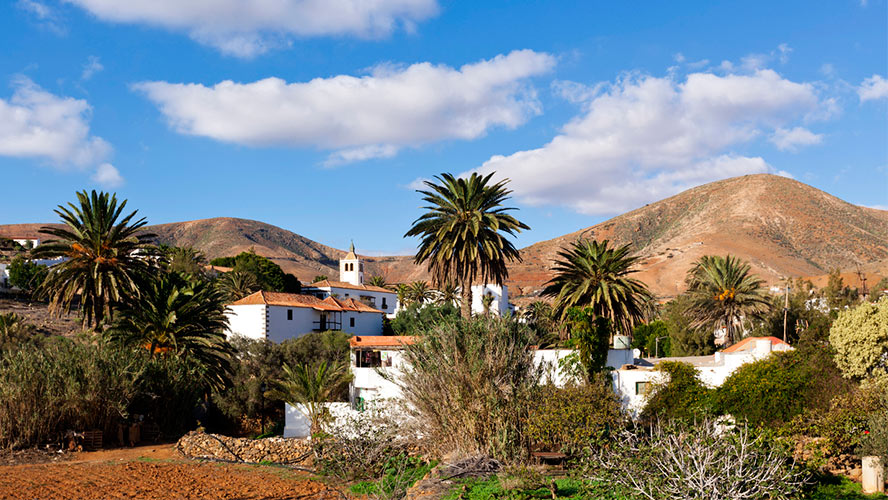
Restaurants for eating well in Betancuria
In Betancuria you won’t only nourish yourself with history and astonishing semi-desert landscapes, you’ll also be able to enjoy an excellent gastronomic experience based on typical Canarian produce.
-
La Sombra restaurant
This restaurant, situated in the heart of Betancuria, is a product of the dream of Ismael and René. Interestingly, before La Sombra opened its doors to the public, its owners used to gather in the courtyard with friends to chat and while away the afternoons.
Considered one of the best restaurants in Betancuria, it serves delicious rustic food made using local produce that will delight the most discerning palates. The restaurant’s exclusive and original decoration will make you feel like you’re in an oasis in the middle of the island. Hamburgers and tapas come at commendable and affordable prices so that those who make their way to La Sombra can enjoy an unforgettable experience.
-
Casa Santa María restaurant
The restaurant Casa Santa María is housed within a beautiful restored home dating from the seventeenth century in the historic quarter of Betancuria, opposite the famous church of Santa María.
The restaurant, awarded the renowned and much coveted Michelin star on several occasions, invites you to enjoy a unique culinary experience in a spectacular building with refined and elegant décor based on stone as its main material.
The restaurant’s chef, Dusan Sekerik, mixes tradition and creativity to produce delicious menus, in which the oven roasted kid goat particularly stands out. It also boasts a fantastic wine menu.
-
Morro Velosa viewpoint
For enjoying a different kind of tea or coffee with incredible views of the Betancuria massif, we recommend the Morro Velosa viewpoint. On its terrace you’ll be completely enveloped by the finest views of the landscape in the area.
The church of Santa María
Another must-visit in Fuerteventura is the famous church of Santa María, which was founded in the fifteenth century as a small chapel to serve the religious needs of the island’s inhabitants. Despite its size, it was the first cathedral in Fuerteventura.
Of particular note in the place of worship, which consists of three naves separated by round arches, is the square tower built by Pedro de Párraga. Be sure to look out for its lovely Renaissance-inspired façade.
Moreover, the parish house also houses a museum exhibiting paintings and sculptures from other churches in Fuerteventura.
Remains of the convent of Saint Bonaventure
The great historical importance of the town of Betancuria can be discovered at every turn, although it might be worth visiting some specific places, such as the remains of the convent of Saint Bonaventure, the first convent to be founded in the Canary Islands. In the monastery lived Franciscan monks who not only helped disseminate the religion but were a source of assistance and support for local people. The convent was also the burial site of an illustrious figure, Don Claudio de Lila, who was a royal engineer.
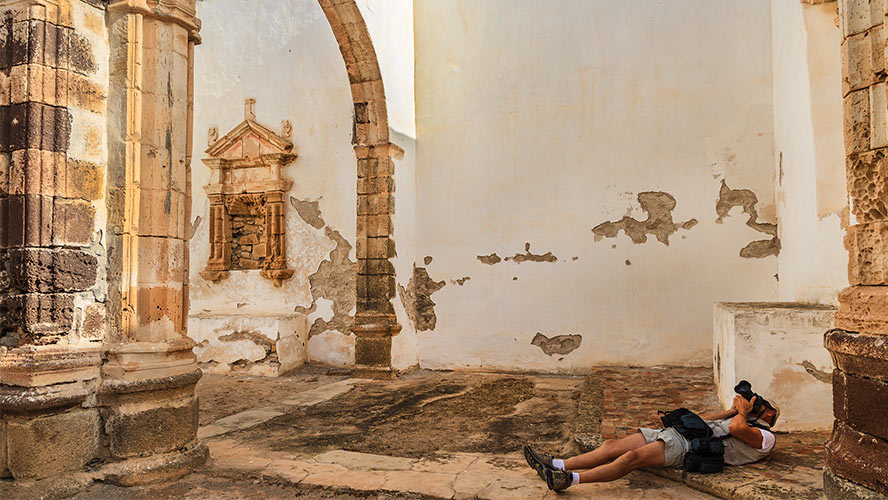
After exploring its natural spaces, landscapes and monuments, you’ll no doubt attest to the fact that the small town of Betancuria is full of history, mystical places and restaurants that will provide you with unforgettable memories.




































































